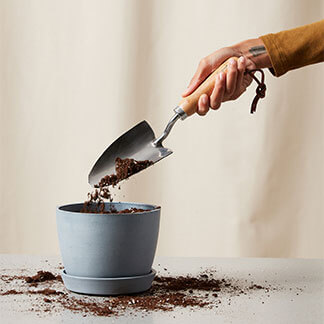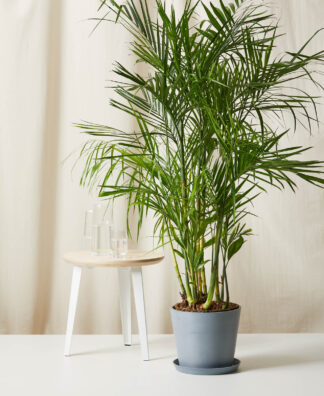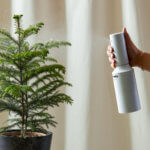How to care for your Plerandra
Use these instructions to care for a Plerandra. This guide will tell you how to water a Plerandra; its light, temperature, humidity preferences and any additional care it might need to help it grow.
Plerandra elegantissima ‘Bianca’
Your Aralia Bianca will do best in bright indirect light, but will also tolerate low to medium light conditions.
Water when 50% of the soil volume is dry. Water until liquid flows through the drainage hole at the bottom of the pot and discard any water that has accumulated in the saucer.
Your Aralia Bianca will love a boost in humidity from time to time but will tolerate average household humidity. If the air gets too dry in the winter, your plant may start to drop leaves. Increase humidity by placing a humidifier nearby or using a pebble tray. Another way to increase relative humidity is to group several humidity-loving plants together in a small area, creating a micro-climate.
Average indoor temperatures are great for your Aralia Bianca–between 60-80°F.
Feed once every other month during the spring and summer with a liquid fertilizer for indoor plants.
False Threadleaf Aralia is toxic to humans and pets if ingested.
False Threadleaf Aralia plants are sensitive to being moved too often–if you have to move it around in your home, do so gradually. Any sudden changes can shock it and cause leaves to drop.
Plerandra elegantissima
Your Aralia Bianca will do best in bright indirect light, but will also tolerate low to medium light conditions. One quality that you’ll notice about your plant is that the leaves become darker as they receive more sun exposure.
You can water your Aralia when the top 50% of the soil volume is dry. Your plant needs enough water to keep the soil moist but not soggy.
Like other popular indoor plants, your Threadleaf Aralia appreciates humidity. Feel free to place a humidifier nearby or use a pebble tray. Likewise, you can keep your plant in a room that has a humid atmosphere, such as the kitchen, bathroom, or laundry room.
The Threadleaf Aralia is comfortable in temperatures between 65 and 85°F. However, your plant doesn’t like sharp decreases in temperature or sitting near drafts or vents.
Your Aralia is not a heavy feeder, so you’ll feed your plant sparingly. It would appreciate a small boost from a liquid fertilizer during the growing season.
Toxic to humans and pets if ingested.
False Threadleaf Aralia plants are sensitive to being moved. If you have to move your plant around, do so gradually. Any sudden changes can cause leaves to drop.
















